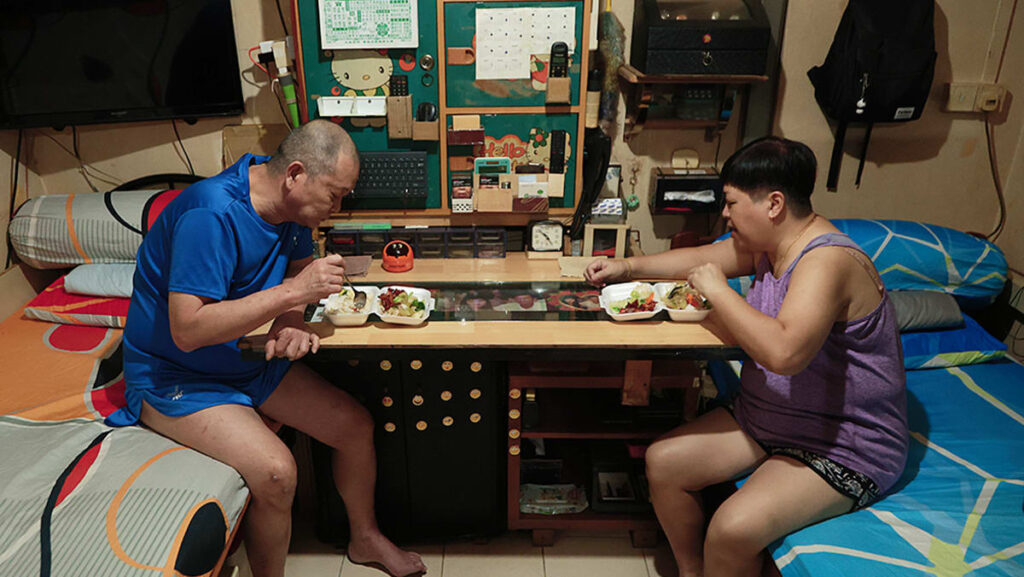HOW GOVERNMENT AGENCIES HELP
With families and NGOs feeling the pinch from rising food costs, what other avenues exist to help low-income communities keep up with a nutritious diet?
In a joint written reply to a parliamentary question last month, the Ministry of Health (MOH) and Ministry of Social and Family Development (MSF) said that they adopt a “multi-pronged strategy” to ensure lower-income families have access to nutritious meals.
The Health Promotion Board works with supermarket chains under the Healthier Choice Symbol programme to increase the variety of healthier house brand products, which are typically more affordable.
In response to TODAY’s queries, the FairPrice Group said that it provides S$3 “nutrient-packed” budget meals across its more than 60 supermarkets.
Around 7,000 of these meals, which include sushi rolls and roasted meat over steamed rice, are sold each month and there has been an increase in demand for them.
More than one tonne of “rescued food and vegetables” is also dispatched across 20 community fridges every month, to be distributed to lower-income families, or at least 2,100 people a month, it added.
In 2022, the Lien Centre for Social Innovation at Singapore Management University conducted its second study on food insecurity, which piloted the provision of supermarket vouchers to food-insecure families.
These are households that lack access to enough food to maintain a healthy diet or are uncertain about whether they have this access.
Mr Steve Loh, executive director of the centre, said: “When given the freedom to make purchasing decisions with additional financial support, the food-insecure households made similar purchases compared to the typical Singaporean household when it came to food categories.”
The majority of families preferred to receive food support in supermarket vouchers rather than ready-made meals.
This provided them with the autonomy to buy food items in line with their dietary restrictions and food preferences.
“These findings suggest that the Government’s various financial assistance programmes for low-income families, such as ComCare and ComLink+, have the potential to empower individuals when making food decisions,” Mr Loh added.
Although making healthy food more affordable and providing direct aid to low-income residents can help, this is best done in tandem with public education on what constitutes a healthy diet, experts and NGOs said.
The joint ministry reply last month highlighted efforts to raise awareness of what constitutes a nutritious meal, such as through the Healthy with KidStart programme under MSF.
Asst Prof Ang from the Saw Swee Hock School of Public Health suggested that the key is in having population-wide policies that improve the food environment for everyone, by making healthy food options accessible or even the default choice.
He pointed to positive efforts such as the elimination of artificial trans fats in food products and continued improvements in the formulation of beverages to have lower sugar content through industry collaborations and the launch of the Nutri-Grade labelling scheme.
“The next focus area is on reducing sodium intake, and similarly, this could be done through policies such as providing increased subsidies for potassium chloride salts,” Asst Prof Ang said in an interview before this week’s announcement on the nutrition labels.
Although it is generally more expensive than sodium chloride salts, potassium chloride salts are said to reduce the risk of hypertension due to its lower levels of sodium.
GROUND-UP EFFORTS
On the ground, residents from rental estates are playing a part in improving their community’s access to nutritious food and promoting healthy eating habits.
Ms Normah is one beneficiary-turned-volunteer of Project Goodwill Aid. She is now responsible for distributing cooked food to around 50 other residents in her estate, liaising with home-based food businesses and private donors.
In Lengkok Bahru, 46-year-old community worker Marlina Yased stocks a community fridge with frozen meats to help families stressed by food costs and runs ground-up initiative Healthy You and Me, which focuses on health challenges in their rental estate.
She also organised an instant noodle cooking competition last month to highlight how a popular and accessible food option could be creatively modified.
Residents were provided with vegetables such as carrots, healthier instant noodle options and proteins such as shrimp to whip up a more nutritious dish.
To modify it and make a healthier meal, she added that mushrooms and greens could be added to increase fibre, and the seasoning packet could be replaced by herbs.
“I wanted to remove the stereotype of instant noodles being unhealthy. We often prepare quick and cheap meals to fill us up. Instant noodles are a staple food for all of us regardless of (whether we live in) a rental or purchased residence,” Ms Marlina said.

